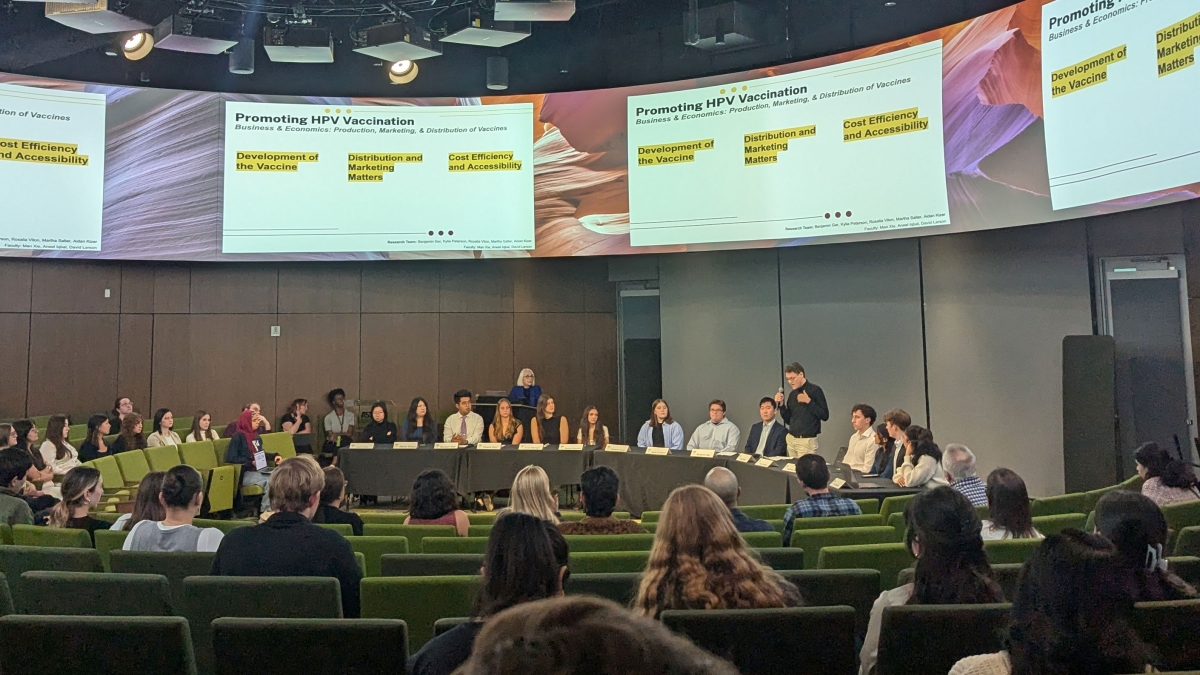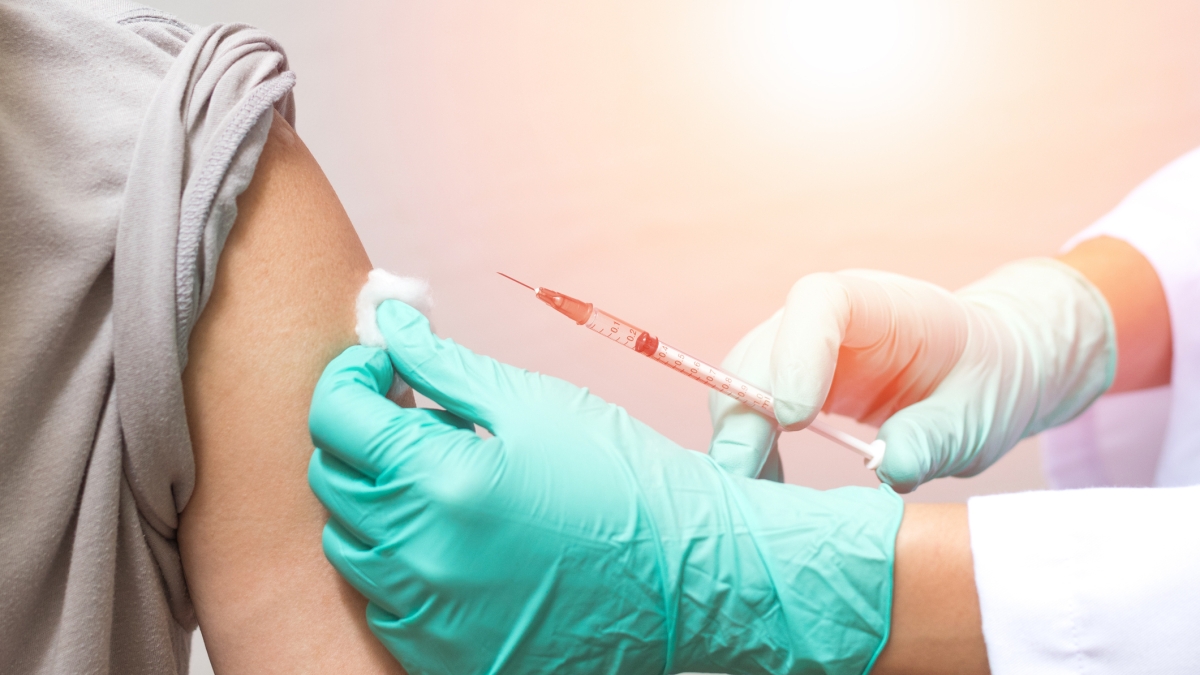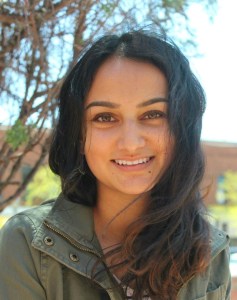Editor’s note: This story is being highlighted in ASU Now’s year in review. Read more top stories from 2020.
Evidence suggests the use of vaccines goes as far back as the year 1000, but the modern-day practice of widespread inoculation can be attributed to English physician Edward Jenner, whose smallpox vaccine saved countless lives at the end of the 18th century, when roughly 10% of the British population had already been wiped out by the disease.
Since then, vaccines have come a long way — the Centers for Disease Control and Prevention estimate they save the lives of 2 to 3 million people every year. Yet, in the late 1990s, a single (since-determined to be fraudulent) study linking the measles, mumps and rubella (MMR) vaccine to developmental disorders in children was all it took to ignite a concerning downward trend in vaccination rates.
Despite the obvious health risks associated with the anti-vaccine ideology, rates of inoculation have remained lower than what is recommended by public health officials, particularly in Maricopa County, Arizona, which was identified in a 2019 paper as one of the most at-risk counties in the U.S. for a vaccine-preventable disease outbreak.
In order to better understand the factors at play in this alarming conclusion, Arizona State University alumna Pooja Sangha worked under the direction of College of Health Solutions Assistant Professor Mac McCullough to study trends in vaccination rates among schoolchildren in Arizona. Their paper, published last month in the journal Vaccine, found a decreased herd immunity statewide and by school type, and an increased rate of personal belief exemptions from vaccinations during the years 2015 to 2018.
Pooja Sangha
“This wasn’t really surprising because we’re also kind of seeing this trend happen nationwide,” Sangha said. “But it’s good that we now have this research to back up the fact that our state is pretty vulnerable.”
Though the study was conducted before the novel coronavirus outbreak, McCullough said the results underscore the need for accurate messaging about the benefits of all vaccines.
“In the midst of this excitement about a potential new vaccine (for COVID-19), we’re seeing fewer Arizona children receiving vaccinations we already have available,” he said. “Vaccination rates are declining across the state, in urban and rural areas, and across the socioeconomic spectrum. That’s a pretty big concern for the public’s health.”
Over the summer and fall of 2019, Sangha analyzed data from more than 600 Arizona schools for the years 2015, 2016, 2017 and 2018. Each year detailed the MMR vaccination rates for those children in kindergarten and sixth grade. Her analysis involved the complicated task of manually linking the data collected each year to the correct school, in order to show change over time.
Mac McCullough
McCullough, who serves as the health economist at the Maricopa County Department of Public Health, praised Sangha for rising to the challenge presented by the department, at the behest of which the study was conducted.
“She was able to act on this data need expressed by the department’s senior leadership to see what’s going on, what types of schools are getting worse, and what types of schools are getting better,” he said. “It took a lot of grit and determination.”
For that, Sangha was named one of the 2019 Students Who Rocked Public Health by the Journal of Public Health Management and Practice, making her the only undergraduate on the prestigious list.
In the end, what they found were downward trends in herd immunity associated with an upward trend in both medical and philosophical exemptions from vaccinations, a trend that began in private and charter schools roughly 15 years ago and within the last five years has spread to public schools.
“Over the last 15 or so years, there was a rise in 'anti-vaxxers,' mostly among charter schools and private schools in wealthier communities. So unlike most health measures, poorer communities were actually doing better on vaccination rates,” McCullough said. “It wasn’t until we looked at the data (from 2015 to 2018) that we saw the areas that saw the biggest decline in vaccination rates most recently were public schools and schools in slightly lower-income communities.
“That was really sad but also really important from a public health perspective, because now we can look and see if it’s the same messages that sort of infected those private and charter schools that are now making their way into the less affluent schools, or if it’s something else entirely.”
Sangha presented these findings to the public health medical director and chief science officer at the Maricopa County Department of Public Health, which intends to use them to prioritize new strategies and target messaging to address declining vaccination rates in Arizona schools in the coming years.
“She was really able to put her findings into practice to benefit public health,” McCullough said.
This fall, Sangha will begin a master’s degree program – likely virtually – in global health economics at Johns Hopkins University in Maryland.
“This experience and everything happening in the world right now has really reinforced my passion for public health research,” she said.
As far as whether the public’s apparent welcoming sentiment toward a vaccine for COVID-19 will have any effect on their feelings toward other vaccines remains to be seen. McCullough, for one, is cautious but hopeful.
“There’s some optimism that the enthusiasm for a potential COVID-19 vaccination might spill over and boost rates of other vaccinations,” he said. “There’s no guarantee of that happening, though. We didn’t see a massive uptick in people getting their flu shots after the 2009 H1N1 (outbreak), for example. But COVID-19 is impacting us at a far greater scale than other outbreaks this century. If there is any silver lining to the COVID-19 pandemic, turning the corner on vaccination rates could be it.”
Top photo courtesy iStock/Getty Images
More Health and medicine
College of Health Solutions program doing its part during Salute to Service
It wasn’t always easy for Marine veteran Chuck Hale when he first returned to civilian life. But he’ll never forget the help he received from a fellow former service member.“The first vet that helped…

What makes human culture unique?
Why is human culture — the shared body of knowledge passed down across generations — so much more powerful than animal cultures?“What’s special about our species?” is a question scientists have…

ASU honors students work on HPV research as part of Barrett College's largest-ever group thesis
Not every undergraduate student comes across the opportunity to do research as part of a team. Even fewer have had the chance to join a team of 86 students doing multidisciplinary research with real-…


